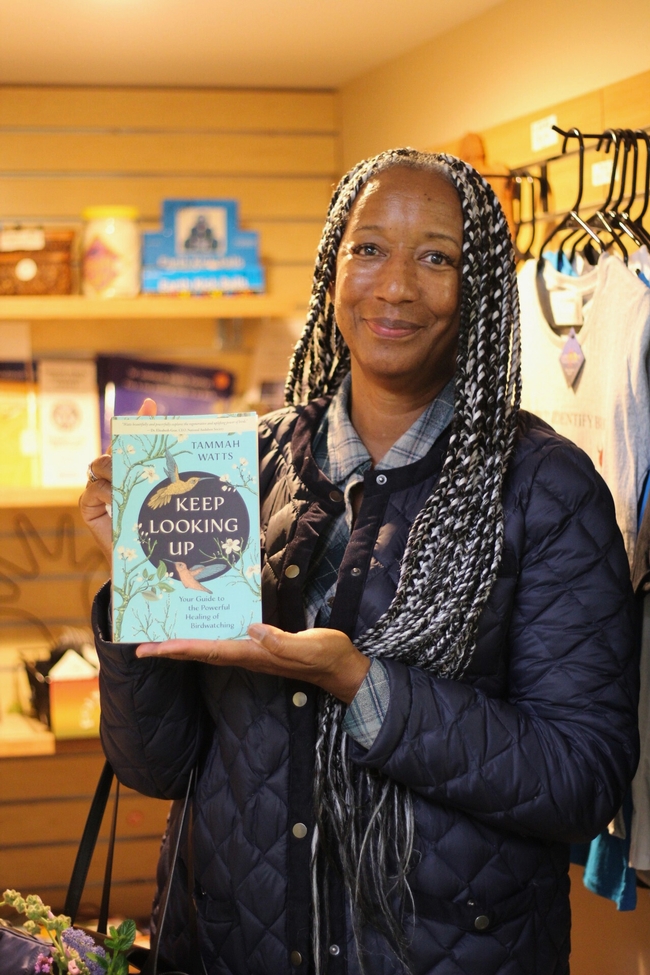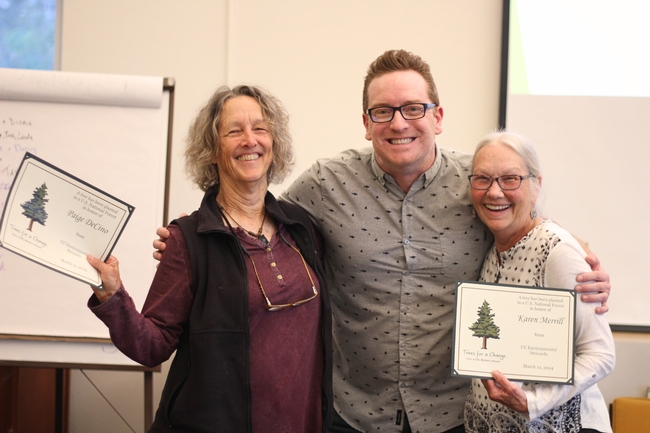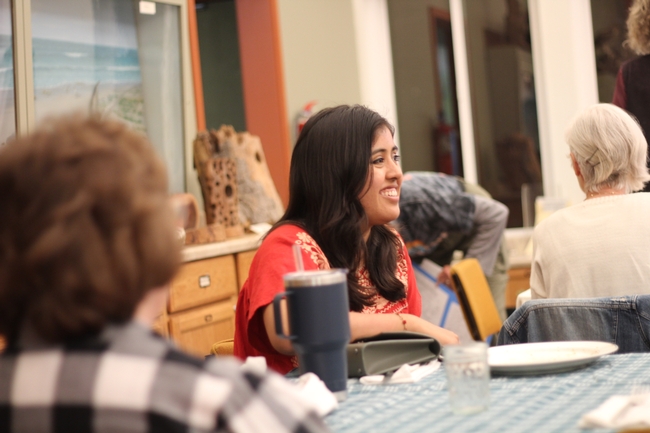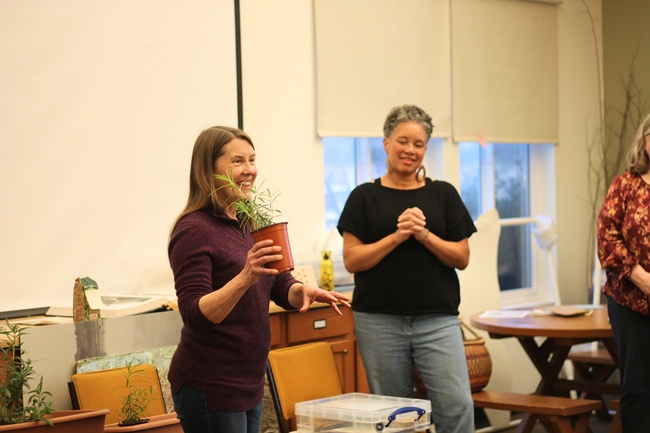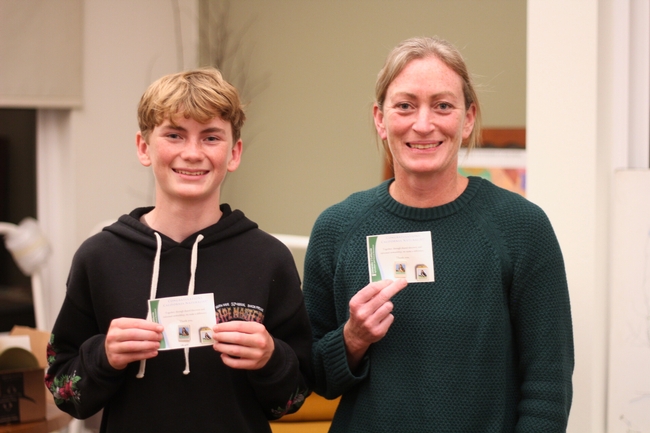Posts Tagged: environmental
EPA’s Final Herbicide Strategy for ESA: What Could Change
Last week, I shared a press release about theEPA's educational materials toolbox related to pesticides and the Endangered Species Act. Today, I wanted tofollowup with another "explainer" document from the Weed Science Society of America about...
RJ Millena: from Entomology-Focused Kindergartener to Scoring Cover of Journal With Her Research
Remember Rebecca Jean "RJ" Millena? She's the little Concord, Calif., kindergarten student who declared--on the very first day of class-- "When I grow up, I want to be an entomologist!" And she did. RJ received her bachelor's degree in...
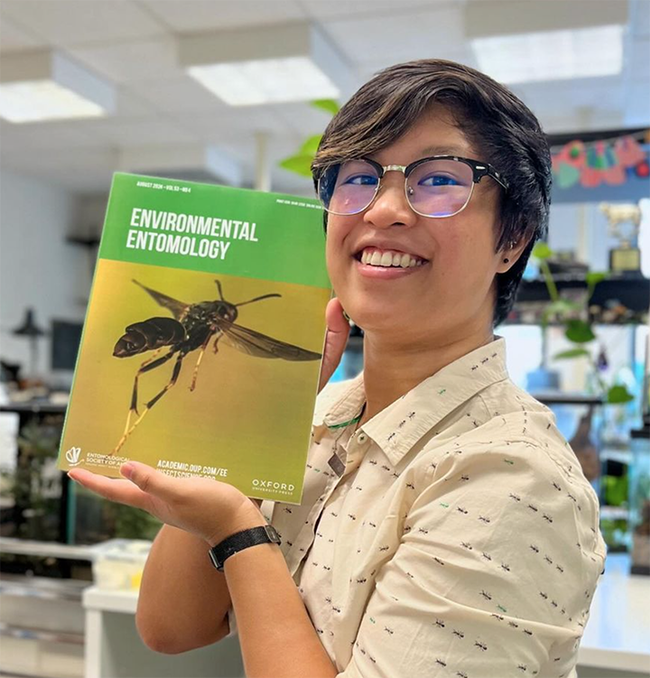
RJ Millena, a doctoral candidate of comparative biology in the lab of Professor Jessica Ware, American Museum of Natural History (AMNH) holds a copy of the journal "Environmental Entomology." Her research is the cover story. (Photo by UC Davis alumnus Lohit Garikipati, now a doctoral student at AMNH)
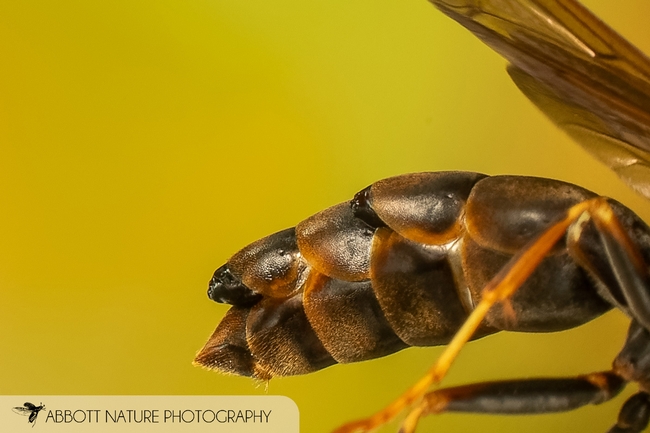
This image shows a twisted-wing insect (Xenos peckii) male pupae in dark paper wasp (Polistes fuscatus) (Abbott Nature Photography)
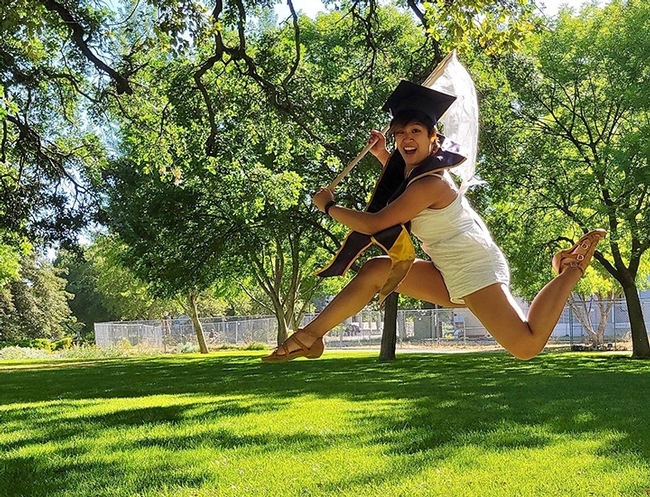
This image of UC Davis entomology graduate RJ Millena shows her jumping for joy while wielding an insect net. (Photo taken in 2021 by Kaylee Fagan)
Lawn-pocalypse! Surviving Drought
Ah, summer! The season of sunburns, pool parties, and… lawn droughts. If your once lush, green carpet now looks like a crunchy brown doormat, you're not alone. Let's dive into why your yard is staging a dramatic death scene and what you can do to...

Bermuda grass and weeds overtaking drought stressed turf grass.
New UC California Naturalists inspire care for nature in San Diego County
Nearly 200 residents trained in past seven years by program, a part of UC Environmental Stewards
On one of her darkest days, Tammah Watts stood in front of her kitchen sink to fill a pitcher of water. Outside of her window, the San Marcos resident noticed a flutter in the distance. She spotted a small yellow bird emerge from the tree and her eyes grew in admiration.
Bird-watching from her kitchen window became an escape for Watts while she was temporarily homebound after a surgery. It's where she found connection beyond the interior space of her home.
“I started noticing other birds that had always been there. The yard didn't change, but my mind and my perspective did,” she said.
Eager to learn more and expose others to her new hobby and its healing power, Watts joined the University of California Environmental Stewards program, a statewide program housed under UC Agriculture and Natural Resources, to become a certified California Naturalist.
The program offers two environmental education certification courses: the California Naturalist course, which introduces people to the wonders of California's unique ecology and engages the public in the study and stewardship of the state's natural communities, and a separate Climate Stewards course.
One of the many strengths of the program is that it allows people from diverse backgrounds to find common ground in nature even if how they became interested varies, said Eliot Freutel, a community education specialist for the UC Environmental Stewards program in Southern California.
“Our partners that help us administer the course are organizations that already have access to the public and provide informal science education, such as natural history museums or Audubon societies,” Freutel added.
Welcoming a new cohort of environmental stewards
In early March, the longest-standing California Naturalist course in San Diego County graduated 25 new members, Watts being one of them, under Karen Merrill and Paige DeCino's instruction. For seven years, Merrill and DeCino have served as co-instructors at the Buena Vista Audubon Nature Center in Oceanside and graduated 166 members prior to their most recent and final class.
Transitioning into retirement, DeCino and Merrill reflected on their seven years of service and are proud to see younger and more diverse faces join the California Naturalist program. Tucker Shelton, who recently graduated alongside his mom, is among the few young people who have joined the program over the years. A love for nature began when Shelton discovered tide pools when he was just a boy. At 14 years old, Shelton wants to inspire a generation of youth with a passion and care for nature.
“When you're younger and your brain is still developing, you're the most interested in new things. If you find a passion at a young age, you'll most likely grow up with it becoming a part of you,” said Tucker, whose capstone project focuses on an essay about the endangered Townsend's big-eared bat and uses stamp art to raise awareness. His art will be featured and sold at an upcoming exhibit and all proceeds will be donated to the Volcan Mountain Wilderness Preserve in Julian.
Hannah Marquez, another recent graduate, was born and raised in San Diego. She values its cultural diversity and believes connecting the public to nature begins with language. In working with Tecolote Canyon Natural Park and Nature Center in Mission Valley to establish an updated native plant library, Marquez is providing relevant information and resources in English and Spanish.
“A lot of people aren't comfortable using technology, and relying on Google Translate isn't going to cut it,” said Marquez, adding that her parents' limited English inspired this project.
Marquez hopes to interest more people in growing native plants in their backyard and believes accessible information is the first step to doing so.
“This has been so rewarding for us,” said Merrill. “Typically, our students are already involved in the community, but for those who aren't, it's amazing to see them become a part of the community and engage in a way that they haven't before.”
DeCino agreed and said that she really hopes to find new instructors to keep the momentum of California Naturalists in San Diego County alive. “Even though we're retiring, we'll still be around here and there, but its important to us that we pass the torch,” DeCino said.
The future of California Naturalists in San Diego County
What's next for San Diego County, you ask?
“We definitely want to expand in the area. But right now, we're looking for alums who are interested in taking over the program held at Buena Vista Audubon Nature Center,” Freutel said. “I'm also hoping to secure more partnerships throughout San Diego County so that the course is offered in various places, not just North County, which can lead to accessibility concerns.”
Like other students, Marquez commuted an hour, each way, to participate in the UC Environmental Stewards program. “It's a worthwhile course, one that helps people have a positive impact in their own community,” said Freutel.
For Watts, helping people find healing and connection to the world around them – an experience her book, a guide to the powerful healing of bird-watching, discusses – is a priority. “It's not just about watching birds,” she said. “It's about noticing the tree the bird lives in, and the ground the tree is growing in.”
During a nature walk that Watts led for a group of kids, she noticed two sets of footprints in the dirt. Immediately, she could differentiate the two. “One belonged to a raccoon and the other belonged to a deer,” Watts said. “I was so excited that I could tell them apart, and I promise I didn't know this before taking the CalNat course.”
To learn how you can join the UC Environmental Stewards program and become a California Naturalist or Climate Steward, visit: https://calnat.ucanr.edu/Take_a_class/
COVID-19 guidelines change
On Jan. 9, 2024, the California Department of Public Health updated its COVID-19 Isolation Guidance, Testing Guidance, and the State Public Health Officer Order.
The updates impact Cal/OSHA's COVID-19 Prevention Non-Emergency Regulations and the requirements related to isolating positive cases and testing of close contacts. To ensure that we maintain a safe workplace and safe ANR programming, and comply with public health and occupational safety requirements, all ANR employees must still follow these guidelines.
The updated Quarantine, Isolation, and Return to Work Guidelines and Quarantine, Isolation, and Return to Work Summary Chart can be found on the ANR Environmental Health & Safety website.
Based on the changes to the guidelines by Cal/OSHA and CDPH, UC ANR will adjust and implement the new guidelines for COVID-19, as follows:
If you test positive for COVID-19:
- Report your COVID-19 test or symptoms to the UC ANR COVID-19 safety team at https://ucanr.edu/covidscreening
- Stay home if you have COVID-19 symptoms.
- You may return to working in-person when all of the following are true:
- More than 24 hours have passed since the onset of symptoms,
- You have no fever without the use of fever-reducing medications,
- Symptoms are mild and improving.
- If you have symptoms other than fever, you may voluntarily isolate until symptoms improve or until after Day 10. Day 0 is the symptom onset or positive test day.
- If symptoms are severe, if you are at high risk of serious disease, or have questions concerning care, contact your healthcare provider.
- Wear a well-fitting mask around others through Day 10 after the start of symptoms or testing positive. You may remove your mask sooner than 10 days if you have two sequential negative tests at least one day apart.
- A negative test is not required for return to work.
If you had close contact with someone with COVID-19:
- Wear a well-fitting mask or respirator around others (at your worksite, indoors, in vehicles, in the field when working near others, etc.) for at least 10 days after exposure.
- Monitor yourself for COVID-19 symptoms. If you develop new symptoms, testing is recommended.
- If you are at a higher risk of severe disease or if you've had contact with someone at higher risk of severe disease, testing is recommended.
- You may still voluntarily get tested after the exposure.
- If you test positive, follow the guidelines for testing positive.
The definition of “Close Contact” remains the same.
Close Contact definition: Close Contact occurs through proximity and duration of exposure. Someone who shared the same indoor airspace with an infected person for a cumulative total of 15 minutes or more over a 24-hour period is considered Close Contact. Spaces that are separated by floor-to-ceiling walls (e.g., offices, suites, rooms, waiting areas, bathrooms, or break or eating areas that are separated by floor-to-ceiling walls) must be considered distinct indoor airspaces.
In large indoor spaces greater than 400,000 cubic feet per floor (such as open-floor-plan offices, arenas or large meeting spaces, warehouses, large retail stores, or manufacturing/processing facilities), close contact is defined as being within 6 feet of the infected person for a cumulative total of 15 minutes or more over a 24-hour period during the confirmed case's infectious period.
Exception: if you or the Close Contact were wearing a respirator or an N95 mask at the time of interaction.
For more information on the updated guidelines by Cal/OSHA, visit:
- COVID-19 – What Employers Need to Know - Fact Sheet: https://www.dir.ca.gov/dosh/coronavirus/Non-Emergency-regs-summary.pdf
- COVID-19 Frequently Asked Questions: https://www.dir.ca.gov/DOSH/Coronavirus/Covid-19-NE-Reg-FAQs.html

